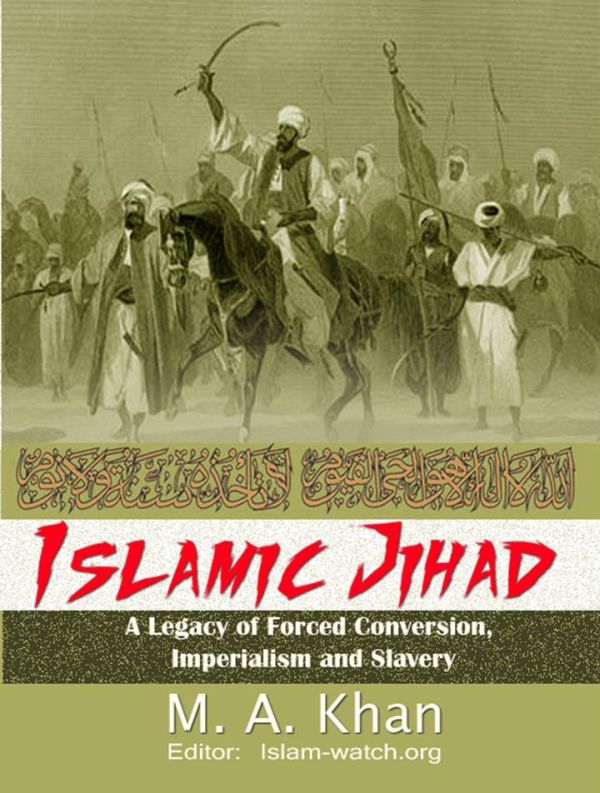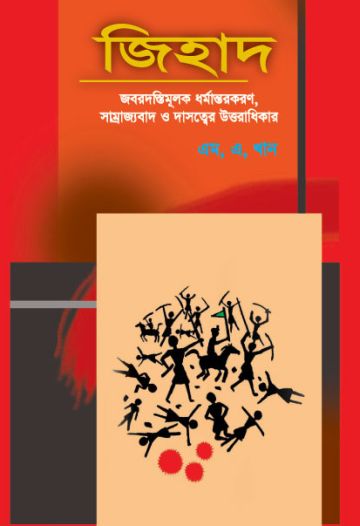Aurangzeb’s barbaric execution of three closest disciples of Guru Tegh Bahadur
It has been mentioned in the previous part of this article that three closest followers of the Guru Tegh Bahadur—namely Bhai Dayala, Bhai Mati Das and Bhai Sati Das—were also arrested at the time of his arrest. Emperor Aurangzeb also issued order to execute them alongside Guru Tegh Bahadur, and they were put to death with such horrific cruelty that only Muslims could contemplate and implement. Bhai Moti Das was sawed into two pieces, Bhai Sati Das was burnt alive, while Bhai Dyala was boiled alive on Nov 9, 1675. Bhai Sati Das was first was wrapped with cotton, then the cotton was soaked with oil, and set on fire.

Bhai Moti Das being sawed into two pieces

Bhai Sati Das was burnt alive

Bhai Dyala being boiled alive
It has been said earlier that the martyrdom of Guru Arjan Dev, the fifth Guru inspired the sixth guru Har Gobind to militarize the Sikhs. He was convinced that spiritual power alone is incapable of saving the non-Muslims from the atrocities and persecution of the Muslims. Alongside spiritual power, muscle power was also necessary and accordingly he used to hang two swords, miri and piri – symbolizing the spiritual and muscle power respectively – on both sides of the Akal Takht (throne of the Guru). In a similar manner, the martyrdom of Guru Tegh Bahadur inspired his son Guru Gobind Singh, the tenth Guru, to militarize the entire Sikh community.
Guru Gobind Singh
 This unimaginably barbaric cruelty of Aurangzeb upon Guru Tegh Bahadur and his dearest disciple naturally turned the Sikh community into bitter enemy of the Mughal government. As instructed by the guru prior to his departure for Delhi, his only son Guru Gobind Singh having become the tenth guru became determined to avenge the cruel murder of his father. He devoted his energy in turning the entire Sikh community into a military unit. He instituted a new line of conduct called Khalsa Panth (‘pure path’) and those who accepted his new guideline were called Khalsa.
This unimaginably barbaric cruelty of Aurangzeb upon Guru Tegh Bahadur and his dearest disciple naturally turned the Sikh community into bitter enemy of the Mughal government. As instructed by the guru prior to his departure for Delhi, his only son Guru Gobind Singh having become the tenth guru became determined to avenge the cruel murder of his father. He devoted his energy in turning the entire Sikh community into a military unit. He instituted a new line of conduct called Khalsa Panth (‘pure path’) and those who accepted his new guideline were called Khalsa.
Guru Gobind Singh was born on 22 December 1666 in Patna, Bihar, while his father Guru Tegh Bahadur and Mata Gujri were on a missionary tour to neighbouring states. He learnt Hindi and Sanskrit while living in Patna as a child. Upon returning to Anandpur Sahib in Punjab in 1672, he also learnt Punjabi and Persian. Since childhood, he also got training in warfare.
Already a Warrior, Poet and Philosopher, Guru Gobind succeeded his father Guru Tegh Bahadur as the tenth Sikh Guru at the tender age of nine. He contributed much to Sikhism that we observe today. His notable contribution was the continual up-dating the faith of Sikhism, initiated by Guru Nanak in the 15th century, as a religion. Guru Gobind Singh, also the last Sikh Gurus, initiated the Sikh Khalsa in 1699. He also passed the Guruship of the Sikhs to eternal Guru Granth Sahib, the Sikh Holy Scripture.
Guru Gobind ushered in a new phase of the Sikh movement. The murder of his father Tegh Bahadur and his great grandfather Guru Har Gobind, imprisonment of his grandfather Guru Harkrishen and the wretched condition of the non-Muslims in India made him comprehend that the common people must themselves find their own survival mechanism against the barbaric religious persecution and tyranny of the Muslim government. He was resolved to put an end to the religious persecution and oppression of the Mughal government, not to fight Islam. So, he even recruited Pathans in his army. On the other hand, Muslim saint Pir Budhu Shah of Sadhaura supported the Guru. This was the reason why Muslim rulers like Said Beg and Maimu Khan fought on his side against the Mughals, and Nabi Khan and Ghani Khan saved him from capture by the Mughal army.
Guru Gobind wanted to create national awakening in Punjab as it had been done in Maharastra by Shivaji. Time was also favourable as Aurangzeb was involved in a life-and-death struggle in the Deccan with the Marathas, and Punjab was in the charge of Prince Muazzam who lived in faraway Kabul. More importantly, the Government in Delhi was in a state of disorganization and the Governors of Lahore and Kangra failed to crush the Guru despite much effort.
Leaving Anandpur
In April 1685, Guru Gobind Singh shifted his residence to Paonta in Sirmaur state at the invitation of Raja Mat Prakash of Sirmaur. According to the gazetteer of the Sirmur State, the Guru was compelled to quit Anandpur Sahib due to differences with Bhim Chand, and went to Toka. From Toka, he was invited to Nahan, the capital of Sirmaur by Mat Prakash. From Nahan, he proceeded to Paonta. Mat Prakash invited the Guru to his kingdom in order to strengthen his position against Raja Fateh Shah of Garhwal. At the request of Raja Mat Prakash, the Guru constructed a fort at Paonta with help of his followers within a short time. The Guru remained at Paonta for about three years, and composed several texts.
At this time, the Guru received inspirations from Hindu scriptures. While reading the Puranas (The history books of the Hindus), the Guru was deeply struck by the idea that God had been sending a savior (or He reincarnate Himself) at the critical hours to save the virtuous and destroy the evil-doers. Guru Gobind Singh began to believe that he had been sent by God for the same purpose. A similar version in Sri Sri Chandi says that God had deputed Devi Durga to destroy the evil-doers. He also began to believe that the same duty had now been assigned to him. So, he became eager to get blessings of Devi Durga. So he started chanting certain slokas of Sri Sri Chandi and was convinced that even a coward, if chants Sri Sri Chandi, might obtain courage.
When he shared his experience with the learned pundits, they advised him to perform a grand Yajna, a Hindu ritual, which was duly conducted at the hill of Nainadevi by Pundit Kesho from Benares. He emerged from the ceremony on March 28, 1699 with a naked sword, declaring his military mission against the cruel Mughals saying, “This is the goddess of power.” He then returned to Anandpur on 30 March, 1699 to create a new nation.
Creation of the Khalsha Panth
 Guru Gobind Singh addressing the congregation on Baisakhi Day |
On the morning of the India New Year Day of 1699 (30 March), he assembled his followers at Anandpur and delivered an extremely stimulating speech on saving the Dharma which was in a great threat. He bitterly criticized the policy of religious persecution of the Mughal government and urged the assembly to safeguard the Dharma (ideals) by themselves as their sacred duty. “The Kal yug (the Kali Era) had reached such a stage that success would come only if a brick could be returned with a stone,” he said. In an ecstatic call, he urged his followers to raise sword of God to destroy the evil wrong-doers in order to save the Dharma.
He then sang,
“I bow with love and devotion to the holy sword,
Assist me that I may complete this task.
Thou art the subduer of countries, the
Destroyer of the armies of the wicked.
******
I bow to the Sword and the Rapier which destroy the evil.
*******
Thy greatness is endless and boundless;
No one hath found its limits.
hou art God of gods, King of kings,
Compassionate to poor, and Cherisher of the lowly.” [1]
 Guru Gobind Singh and the first five Khalsas |
To test the dedication of his followers to him and to the Dharma, the Guru also did a test where five Sikhs one by one offered to sacrifice their head for the Guru. In a mock execution, he took each of them into the room and came out with bloody sword every time. In fact, he blooded his sword with the blood of a goat and the five disciples eventually came out of the room alive and unharmed. This was the inauguration of Guru’s Khalsa Panth. The Guru, in his ecstasy, said:
Jo jo aaraj khalis hoye, has has ke sir dharmahit Khoye
(i.e. Those who made themselves pure sacrifice their lives with a smile for dharma)
Those virtuous people, willing to sacrifice their heads for the sake of Dharma with a smile, become a Khalsa (pure).
The foundation of the Khalsa Panth by Guru Gobind Singh is a milestone in Indian history. It inaugurated the new episode of violent freedom struggle against the oppressive and discriminatory policy and religious persecution of the Muslim rulers. With the help of his Khalsa Regiment, Guru Gobind Singh fought many battles with the Mughal army to win religious freedom and freedom from oppression and persecution of Mughal rulers, which we hope to discuss in subsequent articles.
***********************
References:
[1] R C Majumdar, The History and Culture of the Indian People, Bharatiya Vidya Bhavan, VII:318
(To be continued)



Comments powered by CComment